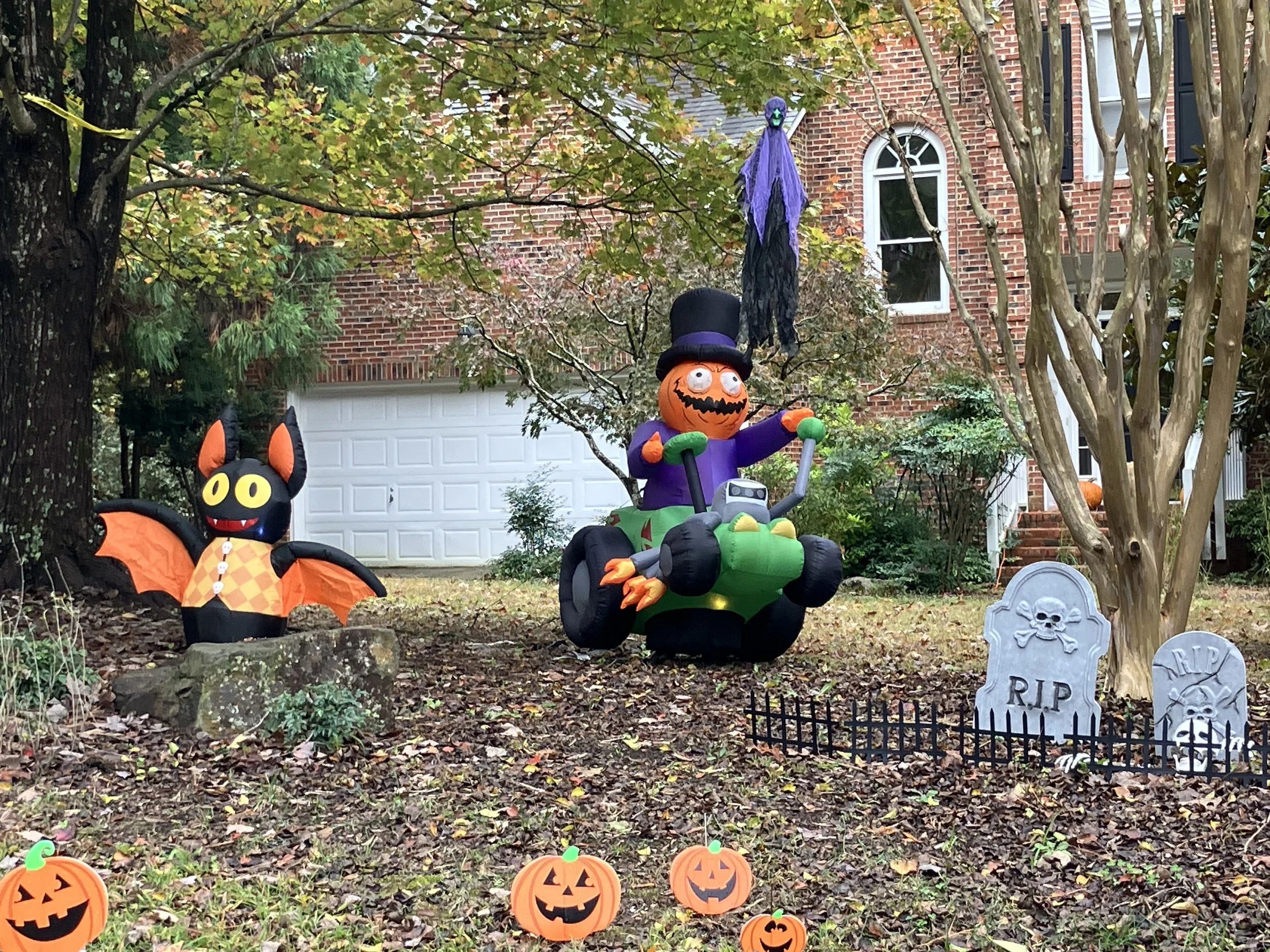Halloweens Past
There were no inflatables.
On Halloween, back when we were kids, maybe our parents found some old white sheets and cut out eye holes and drew a scary smile with magic marker and we were ghosts. Maybe some of the kids wore makeshift eye patches and blackened a tooth here and there and they were ghouls. Some of us had applied temporary tattoos of skeletons on our forearms and we were . . . whatever we were.
We did, maybe, a little trick-or-treating, off by ourselves, parent-less, knocking on doors of neighbors we knew, hoping for some Rice Krispie treats. But we actually preferred the tricks.
If memory serves, what our gang—not a gang, really, more of a gaggle—of half a dozen 10-or 12-year-old boys did was get some sidewalk chalk, put the chalk in an old sock and smash the sock against a building so it would all crumble into a powder. And then slam it energetically on the side of a wall or on someone’s door, so it would leave a great big, colorful mess. Particularly on the doors where no treats were forthcoming.
Or we would get rolls of toilet paper and toss them into trees—or all over someone’s car or front door steps.
These were our retaliations for the absence of something sweet. And all in all, more satisfying even than a Rice Krispie.
No, there were no holiday celebrations at the movie theater or the Y or the mall—we didn’t yet have malls—or other Halloween-themed events. No gatherings to watch horror movies at a friend’s house or at the local movie theater.
That was then.
In Beckley, West Virginia, the other evening, outside an Outback Steakhouse, three nights before Halloween, on a school night in the middle of the week, dozens of kids in elaborate costumes celebrated another Halloween party. Princesses, pirates, soldiers, mermaids, articulated spiders—and parents, a full complement of parents—as a boom box blasted out music across the parking lot.
At the zoo in Cincinnati, one kid—dressed as Indiana Jones—rode an inflatable dinosaur. Another kid, dressed like an astronaut, rode an inflatable rocket. Parents dressed up as “the three little bears” with their daughter as Goldilocks. All through the zoo, “treat stations” offered the kids—and any sweet-toothed adults—malted milk balls, small bags of Laffy Taffy and other concoctions.
In a residential neighborhood in Carrboro, North Carolina, the front yard of one house is overflowing—has been overflowing, for several weeks now—with a multitude of inflatables: Porky Pig, a spooky castle, Power Rangers, a number of characters we couldn’t identify.
In the ‘50s and ‘60s, of course, Halloween was, like much of the world, simpler and more homemade.
Decorations, if there were any, were primitive: paper witches, skeleton cutouts hand-carved jack-o’-lanterns. There were no light shows or elaborate haunted houses. The imagery was playful spookiness—black cats, ghosts and smiling pumpkins, not horror or gore. No horror movie marathons on TV. There were few TV specials (“It’s the Great Pumpkin, Charlie Brown” didn’t air until 1966).
Store-bought costumes did exist, but they were cheap vinyl outfits with plastic masks, not today’s elaborately detailed costumes. And the treats were usually homemade cookies, popcorn balls, maybe apples or candy corn instead of factory-wrapped candy bars.
Then in the ‘70s and ‘80s, Halloween became a major, media-driven holiday and massive pop culture event. Entertainment conglomerates created a market for horror films. Candy companies began promoting the holiday heavily, and the idea of candy as the main treat really took hold. Parents began accompanying their trick-or-treaters because they were concerned about tampering of the popcorn balls.
I love popcorn balls and candy, but I really do miss the simple Halloween of old.


